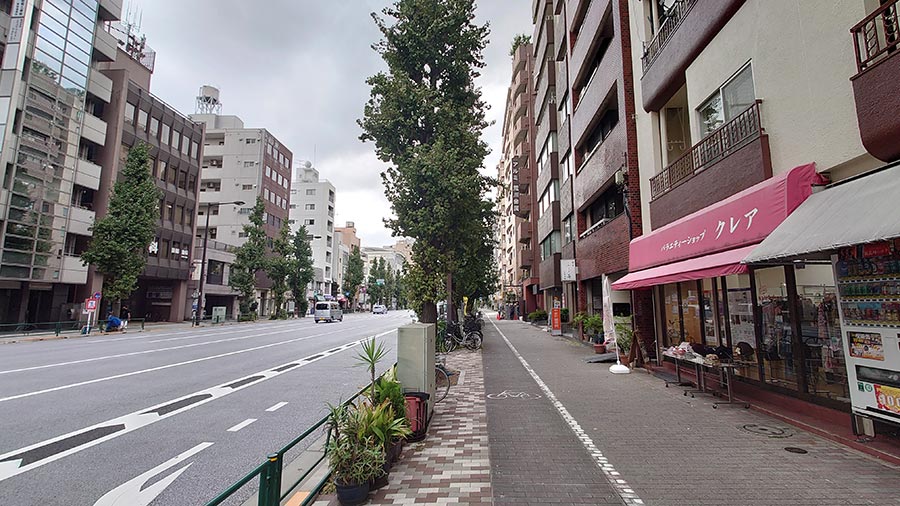Bloody writings on stone monuments of the Komagome Fuji Shrine
It’s October and Halloween will be here soon, but I know you’re already in the mood for something scary. Let’s head out to Komagome in Tokyo’s Bunkyo ward.
After about 10 minutes walk from Komagome Station, we turn left into one of the side roads until we spot a tall torii gate made of stone. It all looks like a familiar sight of a typical, innocent entrance to a shrine…
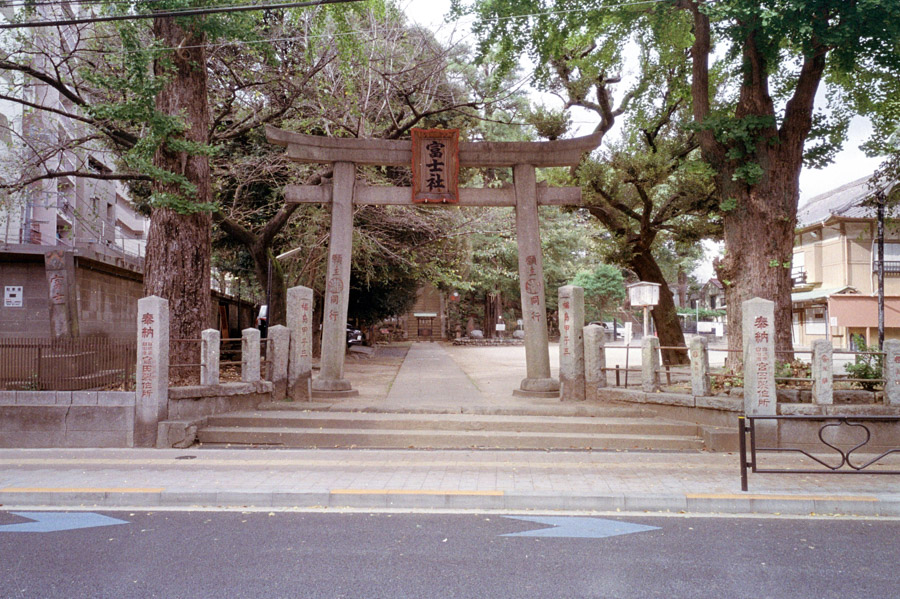
… until we look closer.

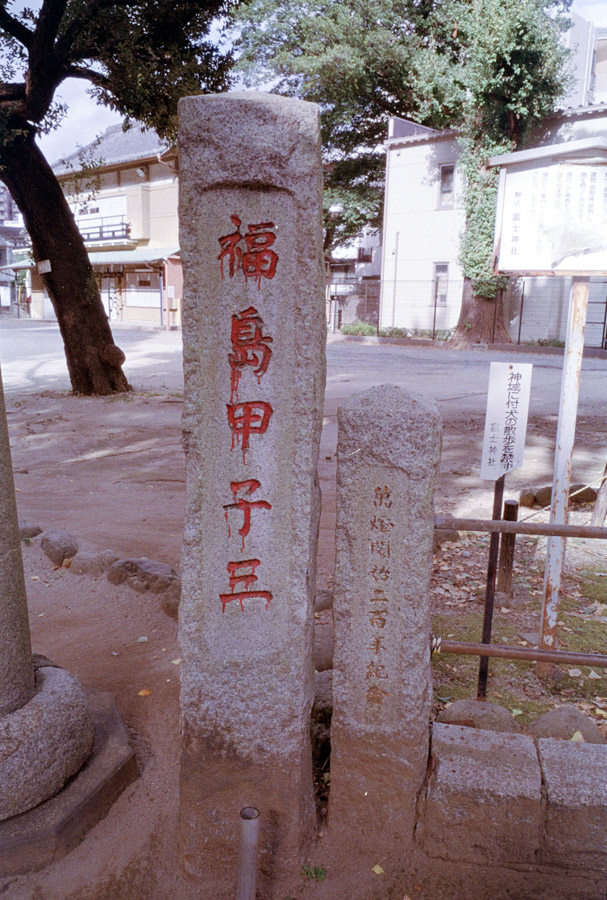
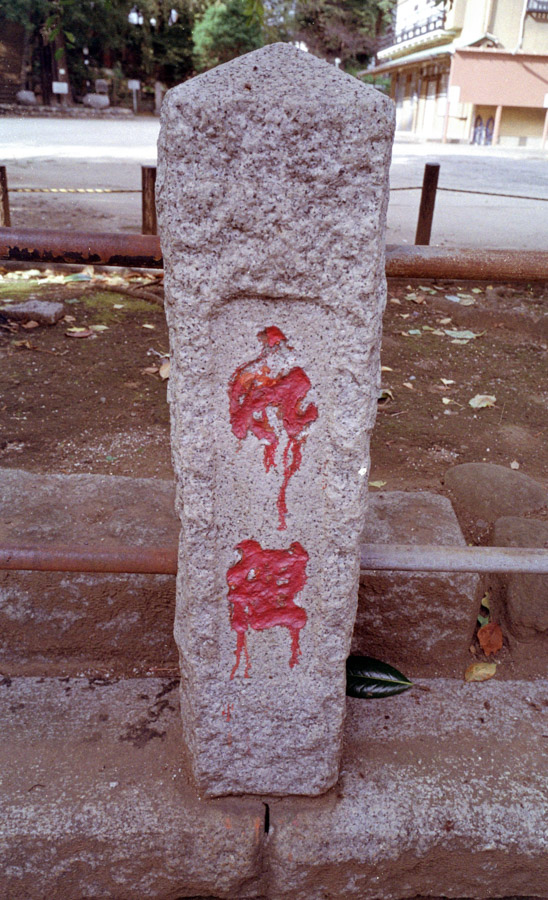
Whoa!! Wait a minute! Are we in a B-rank Japanese horror movie??
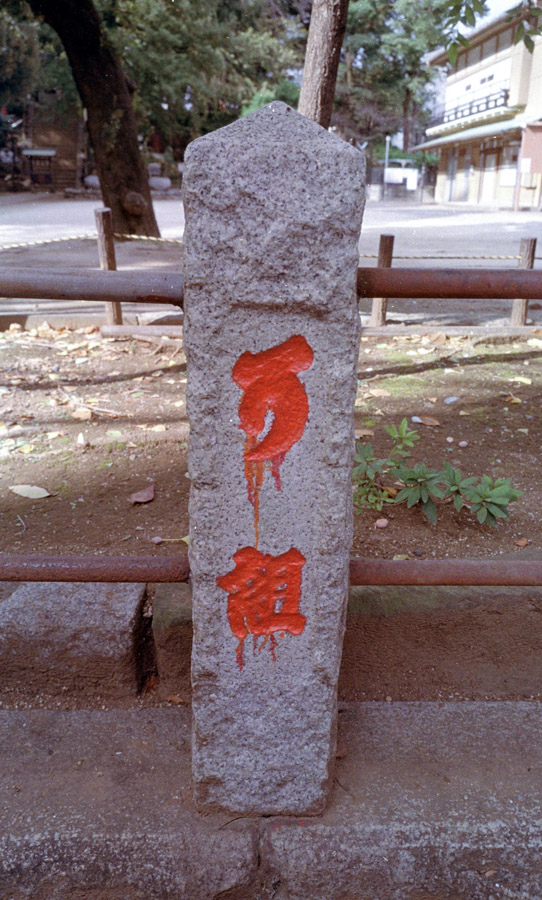
The writings on the stone pillars are literally bleeding!
It’s still daytime, and we muster up enough courage to step into the shrine precincts.

Ladies and gentlemen, welcome to Komagome Fuji Shrine!
Just to calm you down first — the bloody engravings you saw are just the result of a sloppy paint job. Whoever was responsible for painting the characters was using too much paint and it started dripping, producing the bleeding appearance. There are even local (and of course unverified) rumors about women being too afraid to pass by this shrine at night!
Now that we know we’re safe, let’s see what else is there to see here.
A short walk from the entrance, on our left side, we can find a very worn-out looking chozuya, the traditional stone basin for purification.
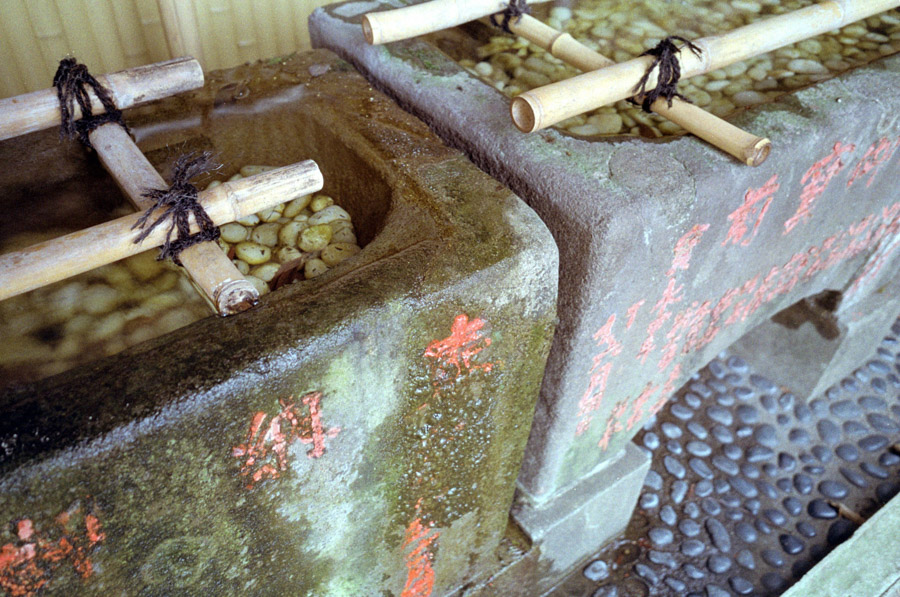
Further ahead there is an old wooden offertory box (called the saisen).
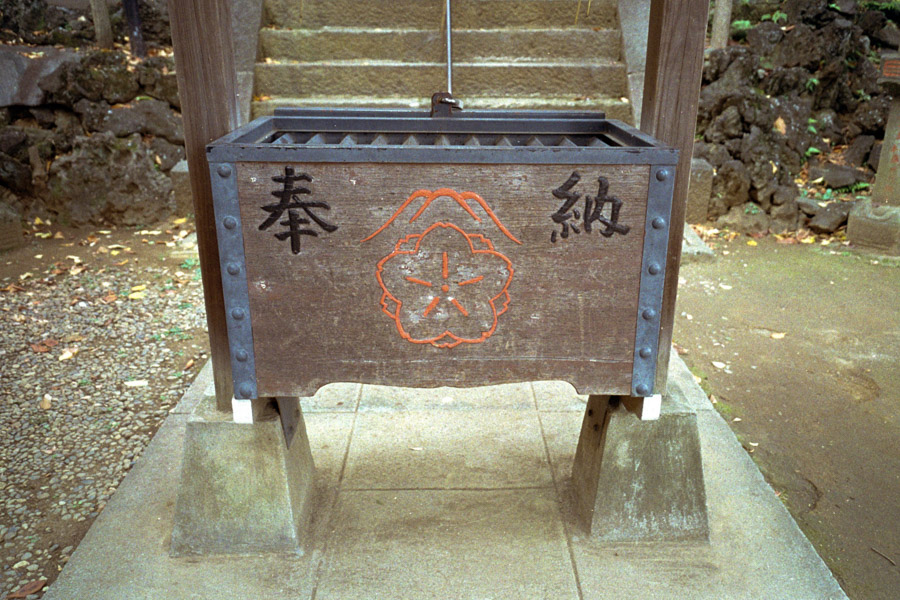
Just behind the saisen, we come to small hill with some very steep stone stairs leading to the main shrine. But let’s investigate something else first. There the several large stone monuments scattered on the rugged slope, bearing vivid red writings, mixed with some rather mysterious symbols in white.
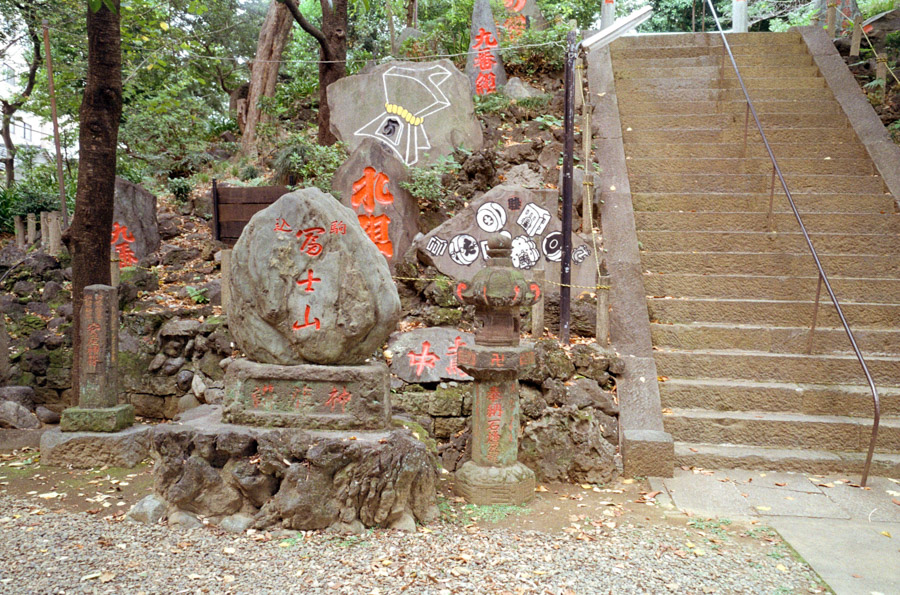
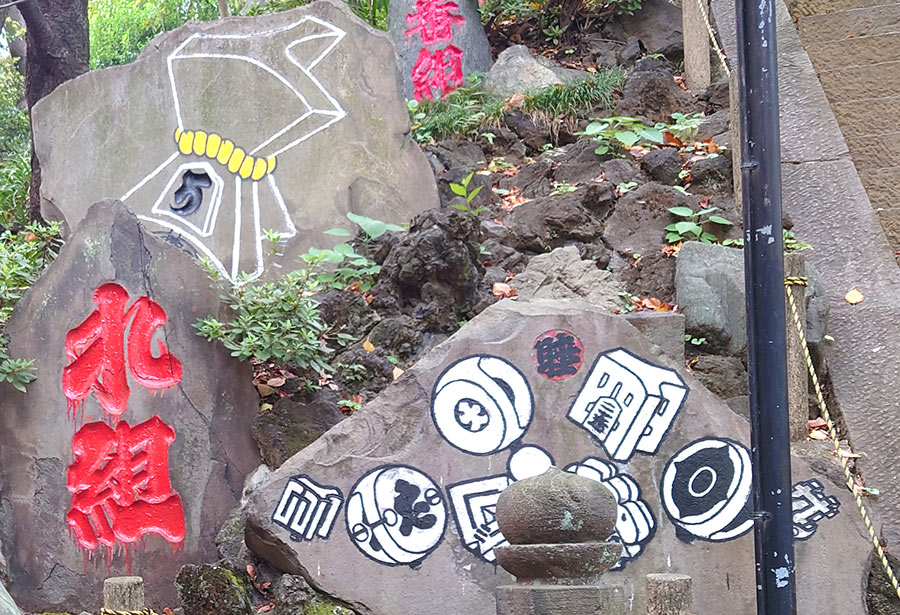
What could these mean? Cryptic messages from an alien civilization?
Not exactly. Historically, this shrine was famous for fire protection and worshipped by firefighters. Thus, the stone monuments are dedicated to firefighters such as the famous Kaga Tobi, a group of firefighters working for the Kaga clan during the Edo period. The white markings represent identification symbols of fire brigades at the time — these symbols appeared as solid geometrical forms in three directions at the top of a matoi (a flag) that was carried by firefighters to notify people of a fire nearby.
The matoi flags are often seen in ukiyo-e prints.
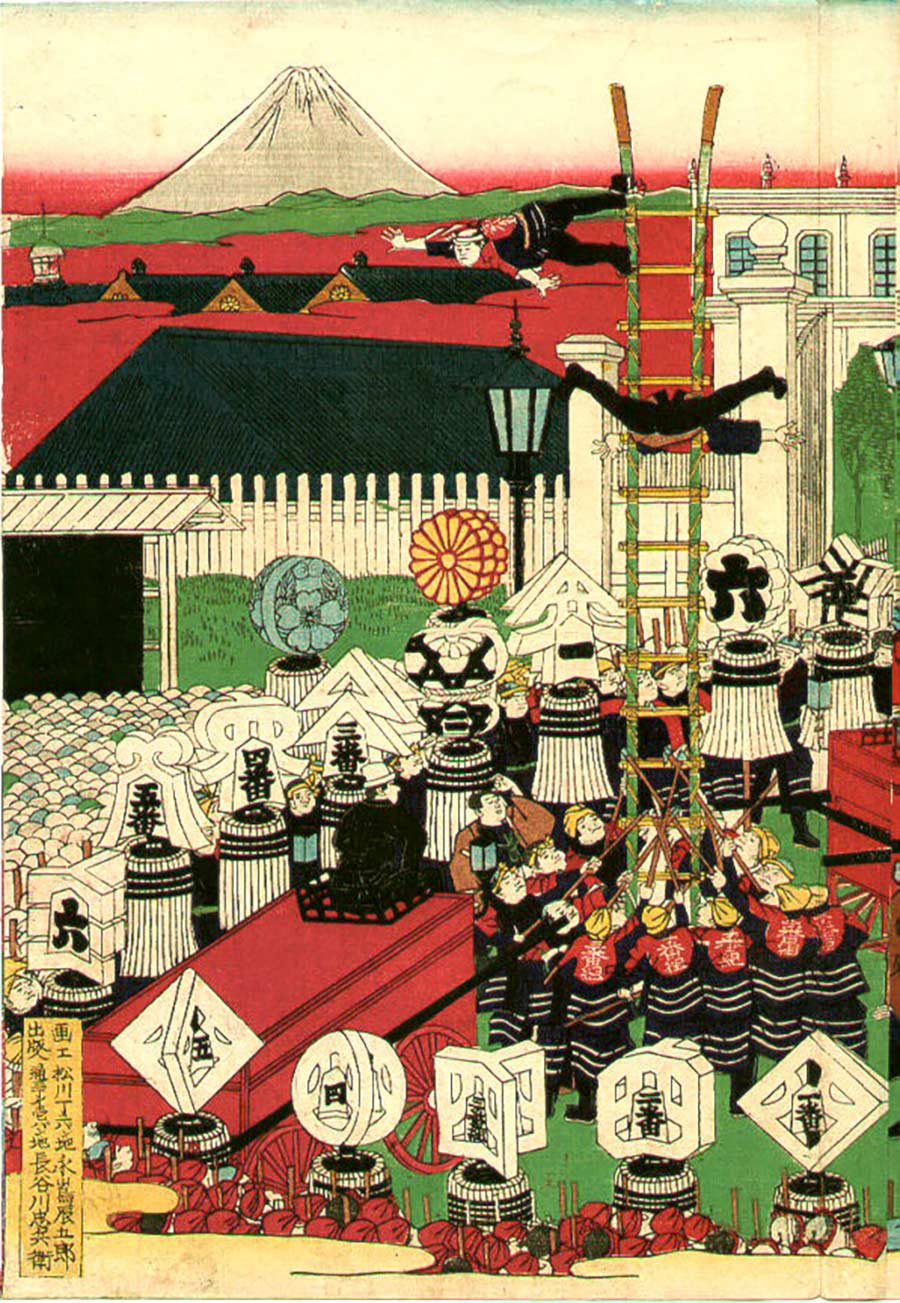

The city of Edo (sometimes also called City of Fires) was prone to fires due to paper and timber construction of the buildings, use of oil lamps, as well as density of the urban population. In one short period alone (between 1851 and 1867), the city suffered over 500 major fires. It comes as no surprise that many fire brigades were established, each bearing their own symbols. At the Komagome Fuji Shrine, there is a fire extinguishing festival held on August 28th every year.

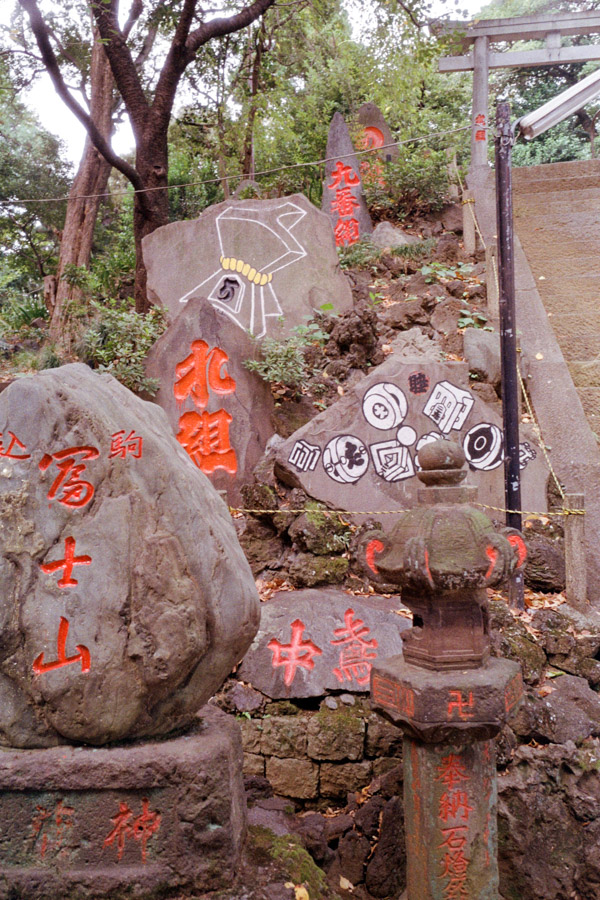
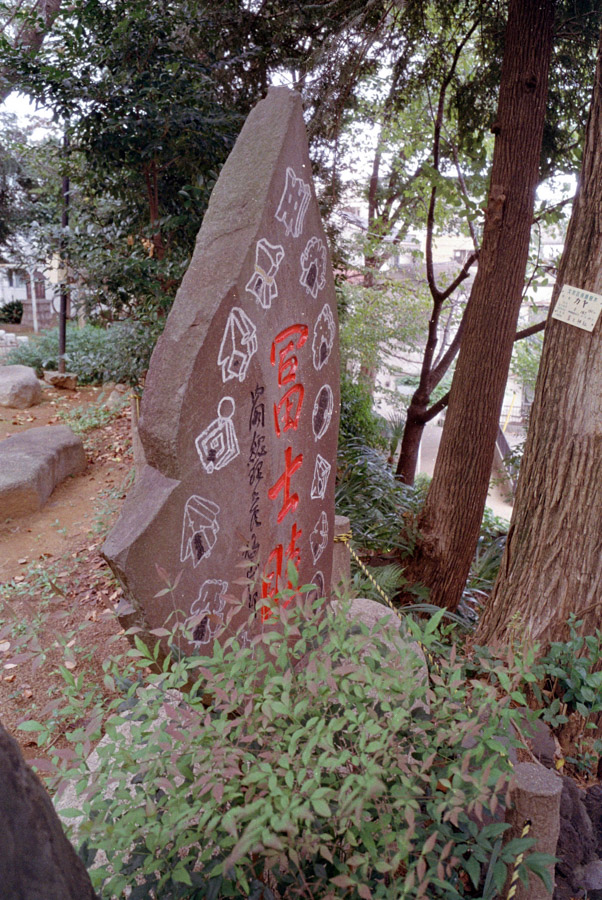
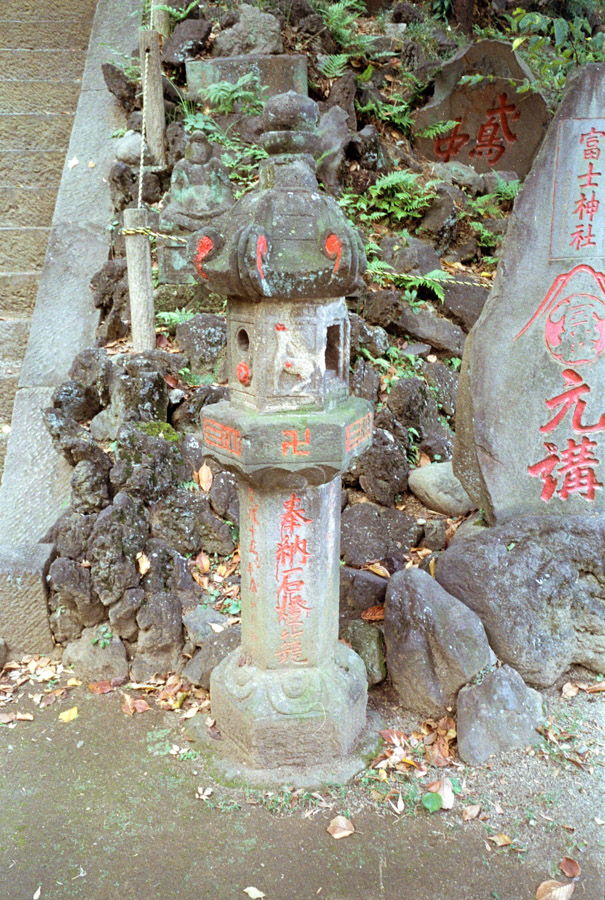

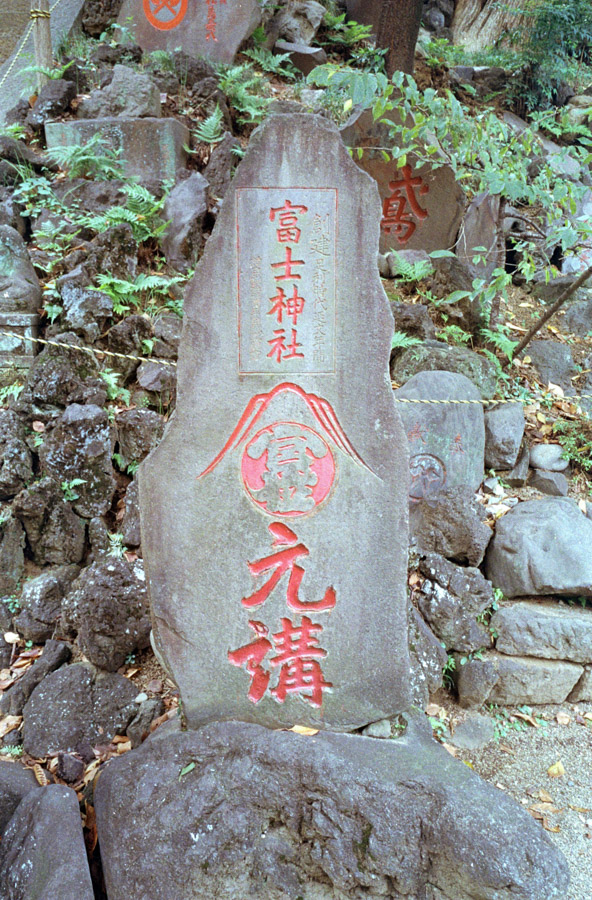
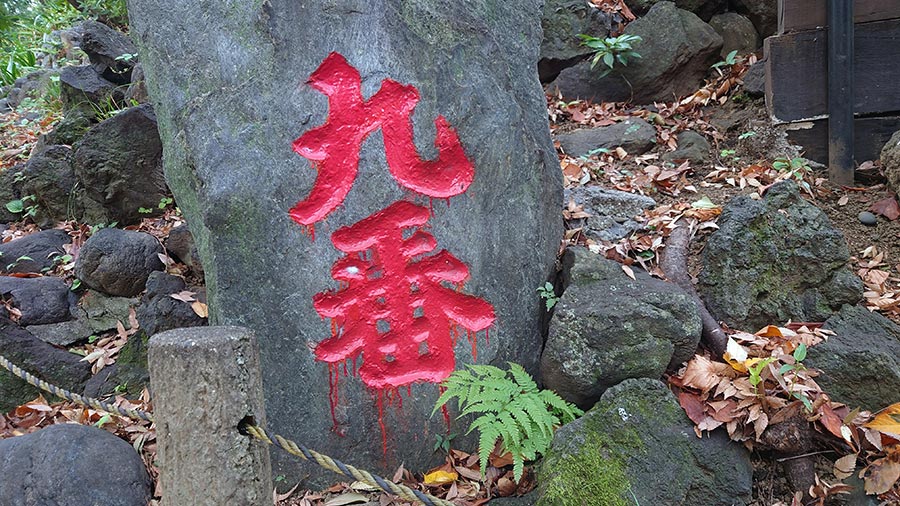
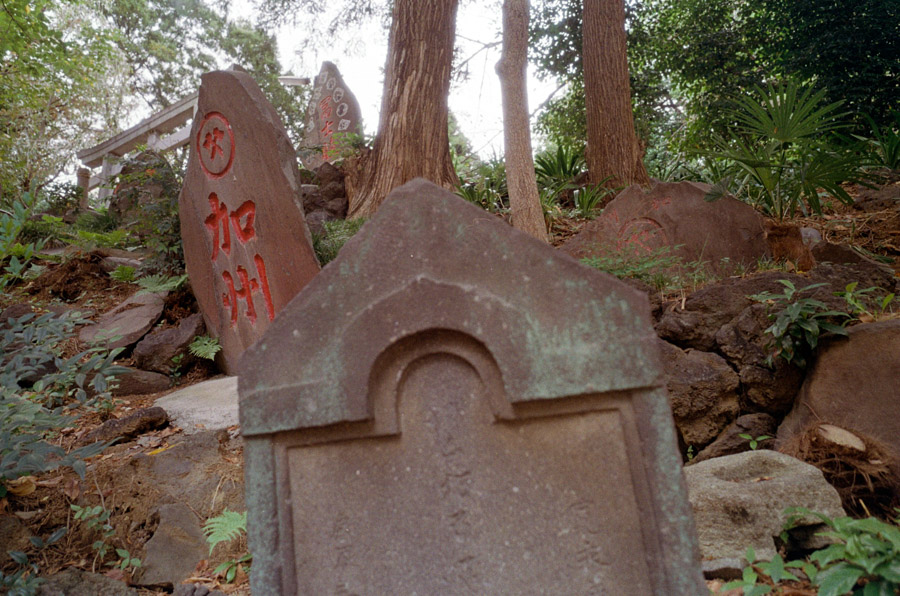
Climbing up the stairs (with inclination of more than 45 degrees!), we arrive at the main shrine on top of the mound.
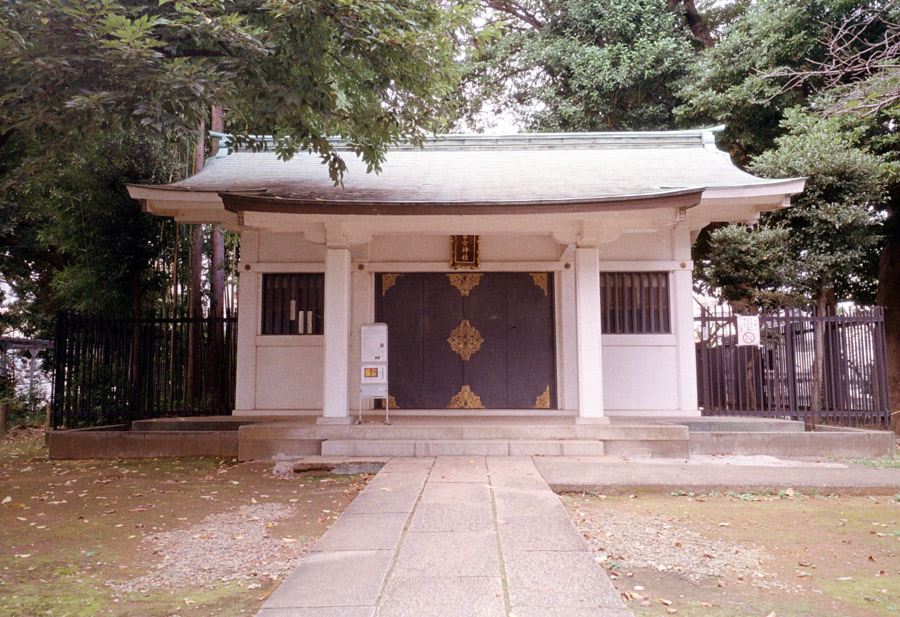
Surprisingly, the structure looks relatively new — it was rebuilt in 1961 and is made of concrete due to damage it incurred in the past from war and other disasters. The origin of the shrine, however, dates back to the first year of Tensho period (1573) but the exact year of the original construction is unknown.
A quick peek behind the shrine — you can find a few pergolas, meant for the purple Wisteria plants to grow on.
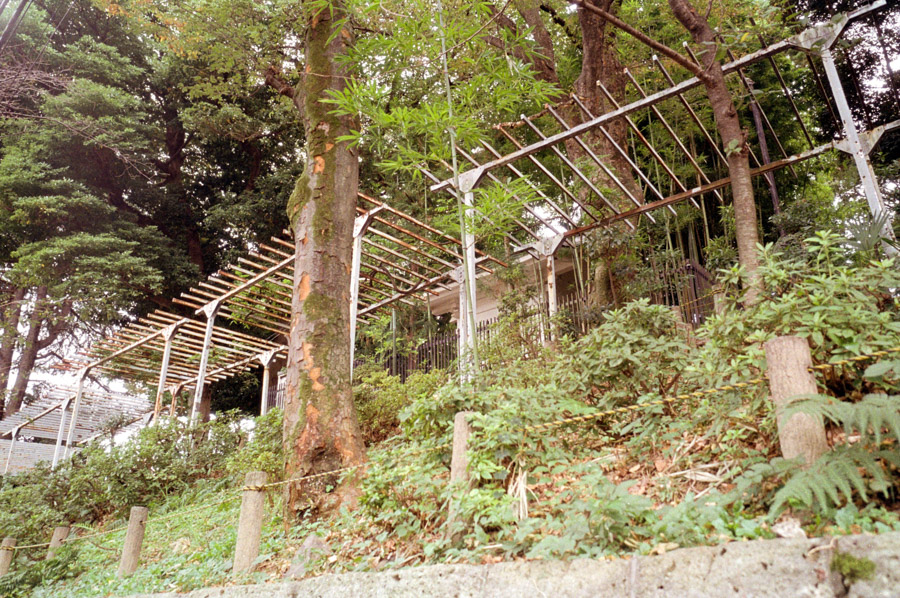
The mound on which the shrine was build is actually a 5.5 meters tall fujizuka (read this article for an introduction to fujizuka). As such, it’s piled with lava rocks that were brought from Mt. Fuji.
To the right of the main shrine, there is an open area with a couple of smaller shrines.
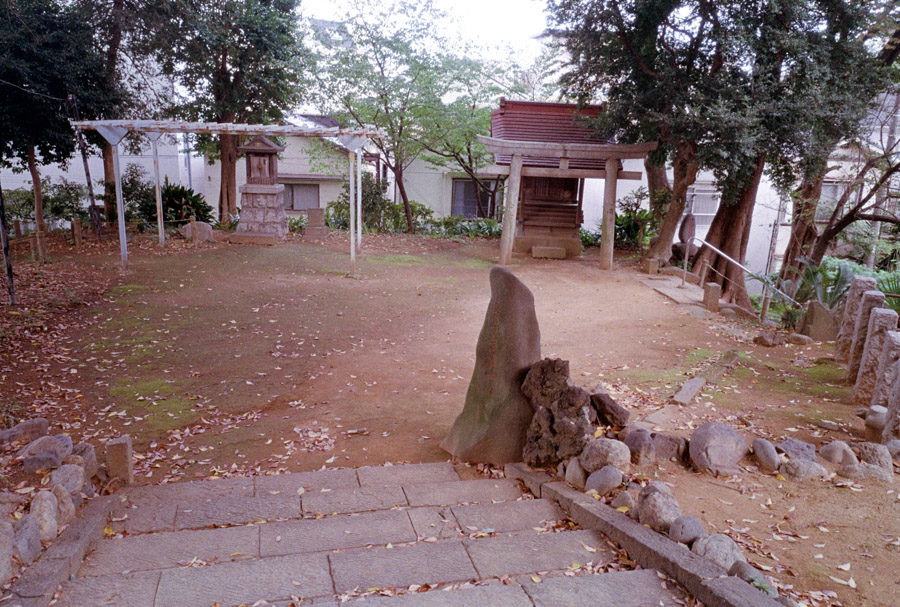
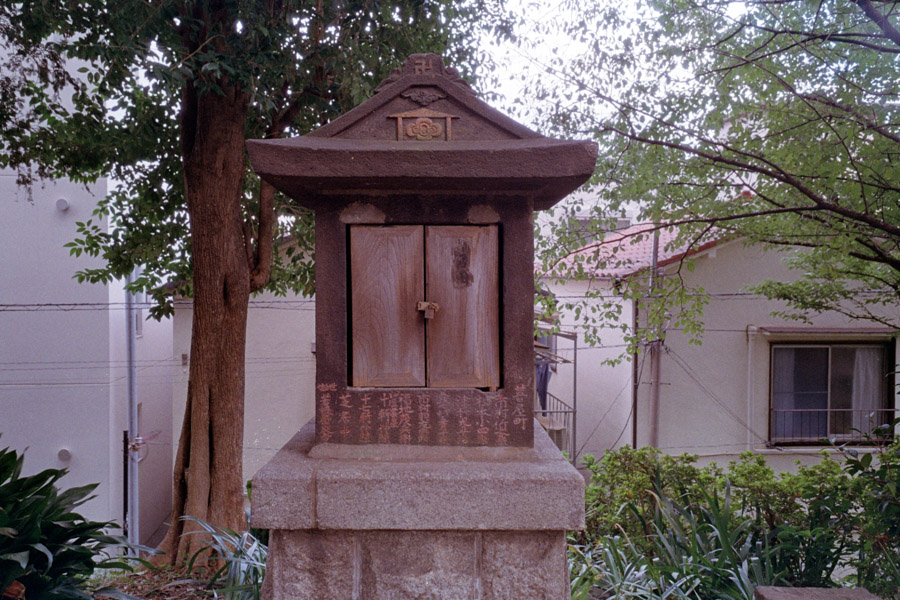
Next to the two small shrines is a path that leads down the mound. It’s a much more gentle slope than those steep stairs and is known as the “women’s slope” (built in 1823), presumably because the main stairs were just too demanding for women to climb on!
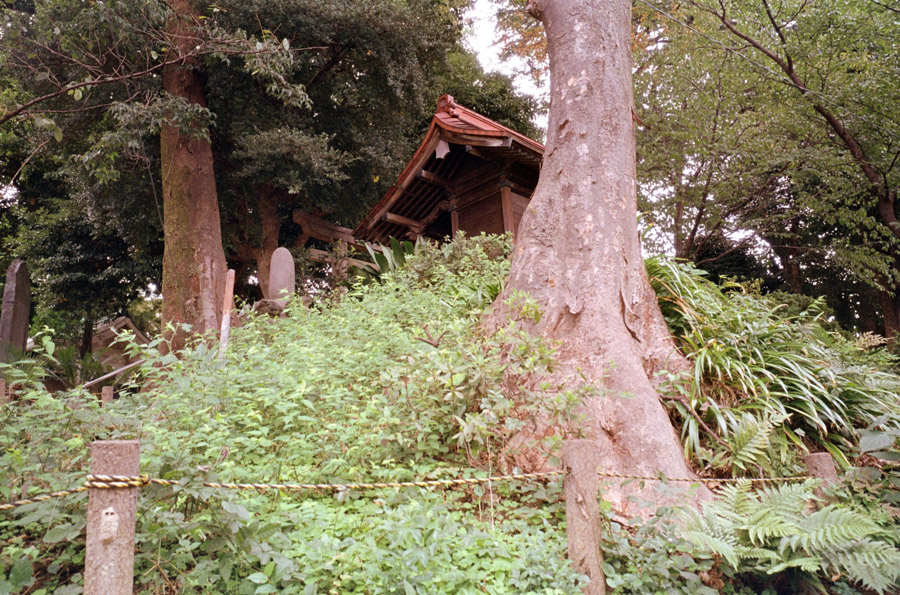
Along the path, there is yet another mystery: a small cave with a blocked entrance. I’m not exactly sure what it is, but if you ever come here, I’ll let you look inside first and see what happens! Preferably at night.
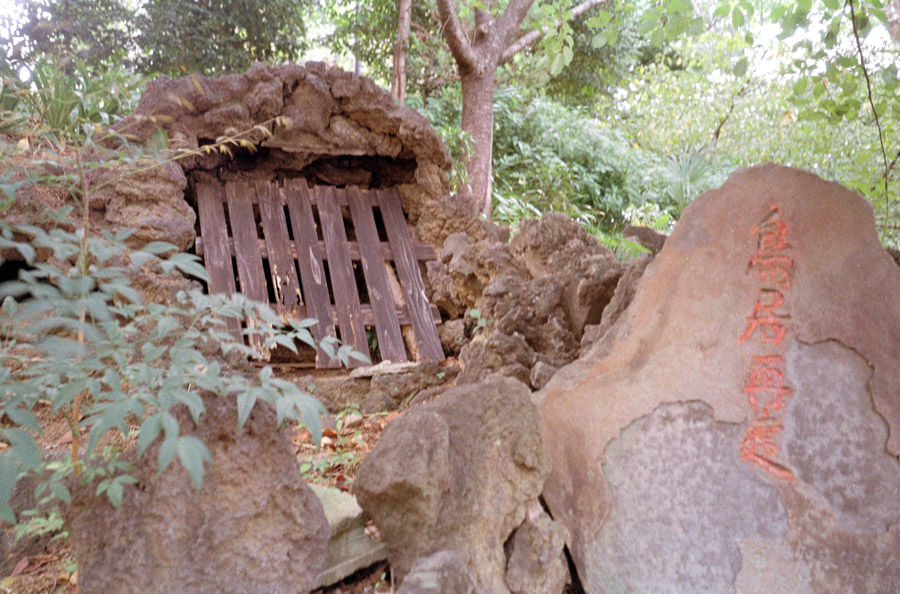
We’re back down from the mound and ready to finish today’s tour. But before I let you go, let’s step outside the precincts a bit.

Such a contrast! A literal forest in the middle of the city. It might be hard to imagine it today, but during the Edo period, this area was covered with a dense forest of cedars and red oak trees.
If you walk around the shrine precincts, you can see a tall, moss-covered stone wall that surrounds the fujizuka. A closer look at the masonry reveals barely visible engravings marking the names of the shrine’s donors.
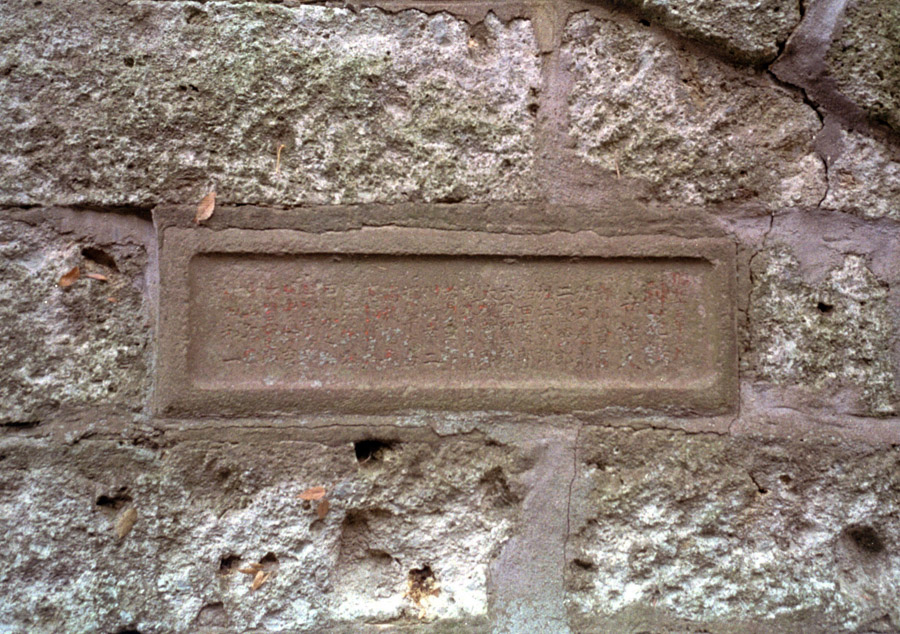
And there you have it — yet another hidden oasis in the middle of densely populated urban jungle. Imagine if you’d never made a random turn left on that big road… You’d never found those scary bleeding stones!
